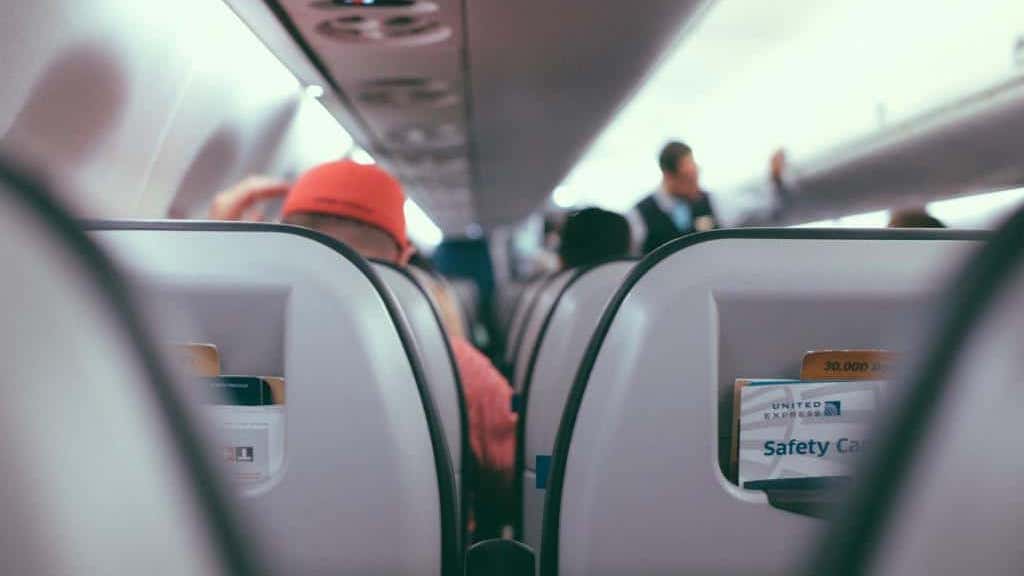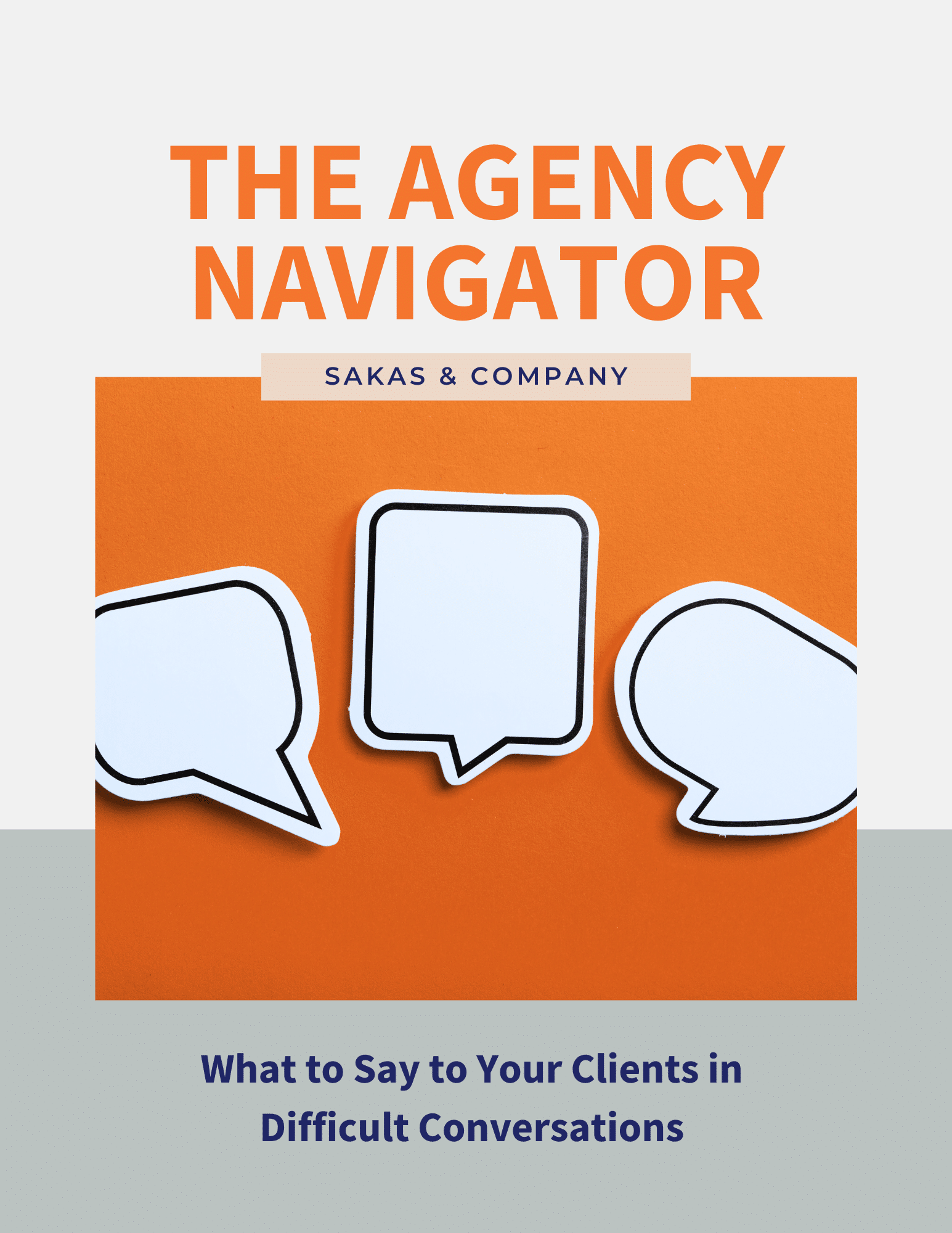Business travel can be tough, but it can move your agency forward—and you can have fun along the way!
As an agency consultant, I travel 25+ times a year—primarily for speaking engagements, plus on-site client projects. I’ve picked up a few things about self-care, productivity, flight-booking, and more.
Many agency owners say they want to work with bigger clients. This typically means they need to fly to clients in distant cities, which adds a new layer of challenges.
Here are highlights from what I’ve learned from 3,000+ hours on the road!
Make sure work continues running smoothly
If you travel, front-load things beforehand to help your team accomplish more when you travel. For instance, if you’ll be away Wednesday to Friday, invest a couple extra hours on Monday and Tuesday to delegate-out some of your regular workload.
Think about what you want to accomplish en-route so you can prepare whatever you need, and print or download things beforehand. I suggest keeping things light, like reviewing one thing per flight. Unless I have an extra-legroom seat, I don’t expect to create new things—there isn’t enough space to open my laptop.
Some people like noise-cancelling headphones; I prefer to use my iPhone earbuds so I have one fewer thing to carry.
I like using flights to work through email replies, including things that I want to respond to, but that are somewhat lower priority than billable work or sales conversations.
I used to pay for Wi-Fi on a per-flight basis; I finally signed up for my preferred airlines’ $50/month in-flight Wi-Fi service, which means Wi-Fi is now “free” on each flight.
When you’re on the ground without Wi-Fi, that’s where data tethering comes in—you can get Internet access on your laptop and/or tablet to make things more productive.
Self-care while traveling
Decide how you’ll manage self-care en-route. Travel throws-off our usual habits and practices. Even small comforts can make a difference. Sure, things are more expensive than at home—but you’re not at home. And these are often business expenses.
Since I’ve chosen to focus my flying with American Airlines, I have a membership to their lounge program, the Admirals Club. Their lounges are much more relaxing than the gate. There’s free food and drinks (so I don’t have to pay extra for food at the airport). I don’t have to worry about watching my luggage constantly, and there’s free WiFi. Some locations even have showers. If you don’t have an annual membership ($400-500/year), American, Delta, and United offer one-day passes to their respective clubs for ~$59. My favorite is Alaska Airlines, whose lounges have a “pancake printer” and materials to make an egg cream.
Sometimes I’ll opt for a chair massage. Not as good as a massage in Raleigh… but my usual massage therapist is not at the airport! Other times, if I arrive early and don’t need to head to my destination immediately, I’ll stop by the Admirals Club at my destination airport to recharge for a few minutes before heading out.
Don’t dress up any more than you need to. It is important to look good, but not at the expense of comfort. My standard outfit is jeans and a dress shirt; this may not work if your clients expect you to wear a suit.
Bringing a jacket or a full suit? Bring a pressing cloth to avoid scorch or shine damage from the hotel’s iron.
Don’t over-schedule yourself when traveling. I sometimes do calls with my team members, but I avoid scheduling external calls while traveling; I don’t want to risk missing a call because of a flight delay or other issue.
Airline, booking and airport tips
Risk-manage your flights—fly the night before. This gives you wiggle room for emergencies and helps you stay calm during delays. Yes, that means an extra hotel night, but it’s usually worth it.
Use a travel agent to keep your booking and travel process as smooth as possible. I book everything through corporate travel agent Silke Eze. She charges a flat $35 booking fee per trip (and no additional charge to handle hotel and rental car bookings). She frequently finds cheaper fares or better itineraries than I saw myself. And (most importantly) when something goes wrong mid-trip, I text her and she fixes it. One of my clients mentioned working with Silke saves him 1-2 hours per trip. As an agency leader, your time is too valuable to be spending an hour booking each trip—work with Silke instead.
Bring the smallest suitcase possible to ease your travels. I like traveling light—a laptop bag and a carry-on. Skipping checked luggage saves time and reduces headaches. My favorite carry-on is tiny—so small, it fits under the seat! And it fits into the overhead bin on all the tiniest regional jets—even when they say “you must gate check all carry-ons.” I have two larger suitcases if that one won’t do.
If you fly at least once a month and aren’t flying directly from a hub (with lots of direct flights), you can likely earn airline “status” (including preferred seating and early check-in). Getting an airline credit card can earn even more perks, like free checked bags (if you need them) and lounge access.
Check out Peter Shankman’s $8 flight “upgrade” tip, where he brings a bag of M&M’s for the flight crew. It instantly puts the crew in a good mood, which translates to a better flying experience for you and your fellow passengers. I’ve done this on every flight segment since October 2016. (It doesn’t actually produce upgrades, since my status with American means I’d get upgraded already, but it feels good to make others feel good.)
Get the airline’s mobile app. I also like TripCase, which is automatically linked to my travel agent’s reservations. They make it easier to keep up with gate changes; the American Airlines app also lets me change seats, view terminal maps, and find customer service options.
Once you get there
Think twice about getting a rental car. They’re expensive, and you add at least an hour to your airport check-in process (between getting gas, returning the car, and getting back to the terminal). Lyft or Uber give you the most flexibility without the downside, plus there’s always new coupons for Lyft app out there to find. Of course, a remote hotel or remote client means ride-sharing isn’t a good option.
Pack a massage ball or lacrosse ball for when you’re stressed—great for working out knots in your back.
Bring a large binder clip to keep your hotel curtains closed so you can sleep better. (Kudos to travel health expert Marcey Rader for this tip!)
Hungry and tired, but need to get work done? Great—order room service. With a $5-10 delivery charge, it’s ultimately just a few dollars more than eating in the hotel restaurant, and you can keep getting work done while you wait. (But good luck on avoiding temptation.)
Speaking of temptation, bring at least some healthy snacks. My go-to is Clif Bars, since they’re tasty and high-protein.
To pack lighter, I like to do laundry in the sink at the hotel. Bring a bar of Dr. Bronner’s soap and a universal drain stopper. (You’ll want to invest in Ex Officio‘s quick-drying underwear.) This takes 15 minutes a day; after working on the computer most of the day, doing laundry is almost relaxing because I can see immediate, tangible results.
Add something fun to every business trip you take. For me, this has ranged from visiting the Johnny Cash Museum in Nashville to visiting the cocktail museum in New Orleans. It’ll help you look forward to business trips instead of seeing them as obligations. (And if you truly dread your business trips, it’s time to weigh whether you’re visiting the right people!)
Finally, consider a memento from each trip. I’m a fan of refrigerator magnets—they don’t take up space in (or add weight to) my suitcase, they’re affordable (~$5 apiece), and my refrigerator gives me a reminder of where I’ve traveled.
Question: What are your favorite business travel tips?


